The Russian bear hunting dog, often called the mastiff bear hunting dog has played a significant role in various cultures throughout history. Serving as loyal companions and invaluable tools for hunters, these exceptional canines possess innate skills. Skills that enable them to assist humans in tracking, flushing out, and retrieving game.
Their unwavering loyalty, intelligence, and exceptional sense of smell make them indispensable assets in the pursuit of wild game. Among the many hunting dog breeds that have carved their place in history and folklore, the Russian bear hunting dog stands out as a truly unique and specialized breed.
Originating from ancient Russia, this noble canine boasts a rich heritage intertwined with myths and legends. Renowned for its unwavering bravery and remarkable hunting prowess, it is well-regarded by hunters who seek to track down one of nature’s most formidable adversaries: the bear.
Hunting Dogs and Their Significance in Various Cultures
The use of hunting dogs dates back thousands of years across numerous civilizations worldwide. From ancient Egypt to medieval Europe to indigenous cultures in North America, these loyal companions have left an indelible mark on human history.
In ancient Egypt, depictions on temple walls show Pharaohs hunting alongside their trusted hounds. In medieval Europe, nobles relied on specialized breeds like Bloodhounds or Greyhounds for tracking deer or hares during hunts known as “coursing.” These dogs were meticulously bred with specific traits suited to different game types.
In Native American culture, tribes like the Cherokee developed unique hunting dog breeds like the Carolina Dog. These canines were highly valued for their ability to help track down small game, such as rabbits or raccoons.
The Russian Bear Hunting Dog – A Unique Breed
While various hunting dog breeds specialize in different game types, the Russian bear hunting dog stands out as a breed solely dedicated to tracking and hunting bears. This unique breed has been honed over centuries to possess the necessary physical attributes, temperament, and instincts to confront one of nature’s most formidable creatures. The Russian bear hunting dog, the Karelian Bear Dog or Russo-European Laika, originated in ancient Russia.
These dogs were selectively bred by hunters who sought a reliable and fearless companion capable of tracking and engaging bears. Their lineage can be traced back hundreds of years, with evidence found in historical texts and artwork depicting these dogs at work.
What sets the Russian bear hunting dog apart from other breeds is its ability to navigate extreme climates and challenging terrains often associated with bear habitats. These adaptable canines excel in their natural environment, utilizing their keen senses and muscular build to face bears with unwavering determination
Historical Background
Origins of the Russian Bear Hunting Dog in Ancient Russia
The roots of the Russian bear hunting dog can be traced back to ancient Russia, where their extraordinary hunting skills were highly valued. It is believed that these dogs descended from a line of ancient breeds used by nomadic tribes in the vast territories of Eurasia. These early predecessors were likely developed through careful breeding practices to enhance their endurance, strength, and tracking abilities, making them suitable for hunting large game such as bears.
Evolution of the Breed over Centuries, Influenced by Various Factors such as Climate and Terrain
Over centuries, the breed underwent significant evolution as it adapted to the diverse climates and terrains across Russia. The harsh winters and rugged landscapes presented challenges that shaped these dogs’ physical characteristics and behavioral traits. To withstand extremely cold temperatures, they developed a thick double coat consisting of a dense undercoat for insulation and a longer outer coat for protection from moisture.
Their robust physique gave them the strength and agility to navigate challenging terrains such as dense forests or mountainous regions. Furthermore, regional variations within Russia also influenced their development.
Dogs bred in areas with heavy snowfall had longer legs to aid mobility. At the same time, those from forested regions possessed an exceptional sense of smell due to their reliance on tracking prey through dense vegetation. This adaptability ensured that Russian bear hunting dogs were versatile enough to perform effectively in various environments.
Role of These Dogs in Russian Folklore and Mythology
Russian bear-hunting dogs are prominent in hunting culture, Russian folklore, and mythology. These loyal companions were often portrayed as courageous protectors whose skills surpassed those of ordinary canines.
Tales abound featuring heroic feats these brave dogs accomplish during hunts against formidable adversaries like bears. They are often depicted as cunning and intelligent in folklore, exhibiting a deep connection with their human counterparts.
These dogs were revered for their ability to track and confront bears, seen as symbols of strength and power. Their presence in traditional tales inspired admiration and reverence for the breed, cementing their place in Russian cultural heritage.
Through centuries of history, the Russian bear hunting dog has evolved from its humble origins to become a legendary breed celebrated for its hunting prowess. The interplay between climate, terrain, and selective breeding has shaped these dogs into formidable companions capable of taking on the mighty bear.
Moreover, their portrayal in Russian folklore further elevates their status to that of mythical heroes. Understanding the historical background of this remarkable breed provides valuable insight into their unique characteristics and enduring significance in hunting culture and Russian folklore.
Physical Characteristics
A Majestic Sight: Appearance, Size, and Build
The Russian bear hunting dog is a captivating sight to behold. Standing tall and proud, these magnificent creatures possess a regal appearance that commands attention.
With an average height of around 25 to 30 inches at the shoulder, they exhibit a well-balanced and muscular build that signifies their strength and agility. Their bodies are elongated and robust, allowing them to tackle the demanding terrain where bears roam.
A Coat Fit for the Elements: Protection Against Harsh Weather Conditions
One of the most remarkable features of the Russian bear hunting dog is its luxurious double coat, which serves as armor against the unforgiving elements of their native land. The outer coat comprises coarse guard hairs that repel moisture and protect against thorny brush or sharp rocks during hunts. Underneath lies a thick undercoat that provides insulation against biting cold temperatures even in the harshest winters.
This double coat shields them from extreme weather conditions and plays a crucial role in their ability to track bears for extended periods. As hunters venture through dense forests or traverse snow-covered landscapes, this exceptional coat ensures their canine companions remain comfortable and undeterred by any climatic challenges.
The Mark of a Hunter: Strong Jaws, Powerful Limbs, and Keen Senses
The Russian bear hunting dog possesses several notable physical attributes contributing to its formidable hunter prowess. Their strong jaws are designed to grip prey with tenacity while minimizing injury to themselves during confrontations with powerful bears. This trait enables them to control an aggressive or wounded bear until human assistance arrives.
Powerful limbs give these dogs an impressive running speed and remarkable endurance—a crucial advantage when tracking elusive bears across vast distances in rugged terrains. The majestic canines possess well-developed muscles that enable them to spring into action with grace and agility, navigating through various obstacles effortlessly.
Their keen senses are an essential asset in the hunting process. With highly perceptive noses capable of detecting faint scents, they can track bears over extensive areas.
Additionally, their acute hearing allows them to detect subtle sounds, alerting hunters to the presence of nearby bears or other wildlife. Combined with exceptional vision adapted for day and low-light conditions, these dogs possess a sensory arsenal that aids their human counterparts in locating and approaching their quarry.
The Russian bear hunting dog’s physical characteristics are truly awe-inspiring. From their majestic appearance and size to their thick double coat protecting harsh weather conditions, these dogs are marvels of nature.
Their strong jaws, powerful limbs, and keen senses enhance their effectiveness as bear hunters. Understanding these remarkable attributes is crucial in appreciating the unique capabilities of this noble breed while delving into the captivating world of bear hunting with Russian bear-hunting dogs.
Training and Temperament
Overview of the training process for Russian bear hunting dogs, emphasizing their intelligence and adaptability:
Russian bear-hunting dogs are known for their exceptional intelligence and adaptability, which makes them highly trainable. The training process for these remarkable canines typically begins at a young age when their instincts emerge.
Establishing a strong bond between the dog and its trainer is essential, as trust and clear communication are key elements in successfully training these dogs. The training regimen for Russian bear hunting dogs focuses on honing their natural abilities, such as tracking scents, endurance, and agility.
Puppies are introduced to basic commands such as sit, stay, come, and heel. As their training progresses, more advanced commands specific to bear hunting are introduced.
Importance of early socialization to ensure a well-rounded temperament:
Early socialization plays a crucial role in shaping the temperament of Russian bear-hunting dogs. Proper exposure to various environments, people, animals, and situations during their early development stages helps them become well-rounded individuals capable of confidently handling different scenarios. Puppies should be gradually exposed to different sounds, like gunshots or loud noises they may encounter during hunts.
Additionally, introducing them to other animals will help prevent aggression towards potential prey or fellow hunting companions. Socializing puppies with children is also important so they learn to interact gently without aggression.
Loyalty, courage, and instincts when facing large game
Russian bear hunting dogs possess an innate loyalty towards their human companions that stems from centuries of breeding selection for working alongside hunters. Their unwavering devotion allows them to form strong bonds with hunters while staying focused on the task. In addition to loyalty, these extraordinary canines display remarkable courage when confronting large game such as bears.
Their strong prey drive and instincts guide them in tracking, cornering, and even distracting bears to protect their human counterparts during hunts. Their fearlessness in the face of danger is truly awe-inspiring.
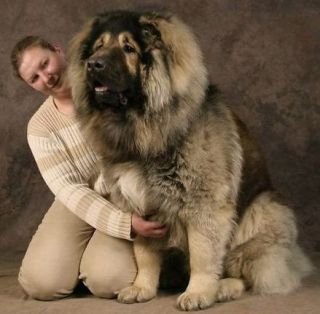
Hunting Techniques
Tracking: How these dogs excel at tracking bears through scent trails over vast distances
The Russian bear hunting dog possesses an exceptional ability to track bears, making them invaluable assets in hunting expeditions. With their keen sense of smell, these dogs can pick up the scent of a bear from impressive distances, even when the trail is faint or has been disrupted by other scents. Once they catch the scent, their determination and tenacity drive them forward relentlessly, tirelessly following the trail until they locate the target.
During tracking, these dogs employ a combination of olfactory prowess and physical agility. Their long legs enable them to cover large areas swiftly while focusing on the scent trail.
Their powerful noses allow them to discern subtle changes in smell intensity and direction, guiding hunters toward their quarry with remarkable precision. Their thick double coat also insulates against harsh weather conditions during tracking missions.
Baiting: Utilizing bait to lure bears into an area where the hunter-dog team can ambush them
Hunters frequently employ Baiting with Russian bear-hunting dogs to increase their chances of successfully ambushing a bear. This method strategically places enticing bait in areas known for high bear activity.
The bait can be anything from food scraps or carcasses to strong-smelling attractants like fish oil or honey. Once the bait is set up, hunters position themselves nearby and wait for bears to be drawn towards it.
The Russian bear hunting dog plays a crucial role in this process as they monitor the surroundings vigilantly for any signs of approaching bears. Their acute senses allow them to detect visual cues and subtle changes in wind direction that might indicate a bear’s presence before it becomes visible.
When a dog spots a bear approaching the baited area, it signals its handler discreetly through trained behaviors such as freezing, pointing, or quietly returning to the handler. This alert allows the hunter to prepare for the ambush, ensuring a controlled encounter with the bear.
Flushing
Techniques employed to flush out hidden or hibernating bears
Flushing is a specialized technique used when bears are hiding in dens or dense vegetation, such as during hibernation periods. Russian bear-hunting dogs excel at flushing out these elusive targets due to their agility and sharp senses. When searching for hidden bears, these dogs move cautiously but swiftly through challenging terrain, utilizing their acute hearing and sight to detect subtle movements or sounds that might indicate the presence of a bear.
Once they locate a potential hiding spot—such as caves, hollow trees, or dense undergrowth—they carefully approach and apply their instincts to coax the bear or drive it toward waiting hunters. The flushing process requires exceptional coordination between the dog and the handler.
The dog must remain focused on its task while responding rapidly to commands from its handler. Often, hunters use specific vocal cues or hand signals in conjunction with whistle commands to effectively direct the dog’s movements.
Russian bear-hunting dogs employ various techniques in their collaborative efforts with hunters. Whether it is tracking bears over vast distances through scent trails, luring them into an ambush using baiting methods, or flushing them out of hiding spots during hibernation periods—the skills and versatility of these remarkable dogs continue to impress both experienced hunters and enthusiasts alike.
Challenges Faced by Hunters & Dogs
Risks Associated with Bear Hunting: Injuries and Encounters
Bear hunting, particularly with a formidable animal like the Russian bear hunting dog, presents several inherent risks that hunters must confront. Perhaps the most immediate danger is the potential for injuries sustained during confrontations with aggressive bears. These powerful animals possess immense strength and can cause severe harm to both dogs and hunters if not managed skillfully.
Close-quarter battles can lead to deep puncture wounds, broken bones, or even fatal injuries if precautions are not taken. Moreover, encounters with aggressive bears add another layer of complexity to the already challenging task of bear hunting.
Bears are known for their strength, agility, and unpredictable behavior when provoked or cornered. A sudden change from a wounded or startled bear can catch dogs and hunters off guard, increasing the risk of injury or fatality.
Mitigating Risks Through Careful Planning and Preparation
Experienced hunters understand that successful hunts rely on meticulous planning and comprehensive preparation to mitigate risks associated with bear hunting. Firstly, a thorough knowledge of the area is crucial; understanding bears’ habitat and behavior patterns allows hunters to strategize effectively. This includes identifying potential escape routes for dogs and humans in dangerous encounters.
Hunters also employ various safety measures, such as utilizing protective gear like Kevlar vests for their dogs to minimize injuries during encounters with aggressive bears. Additionally, careful consideration is given to selecting appropriate firearms with adequate stopping power while ensuring minimal risk of collateral damage.
Furthermore, continuous training in self-defense techniques equips experienced hunters with indispensable skills necessary for handling adverse situations swiftly and efficiently. By honing their instincts and maintaining the physical fitness levels required for quick reflexes, hunters increase their chances of overcoming potential dangers while safeguarding themselves and their loyal canine companions.
If you are interested in acquiring one of these dogs, the American Kennel Club is a good place to look. Pricing starts at $1,000.
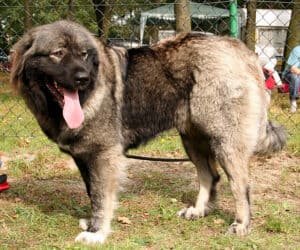
Conclusion
In the world of bear hunting, where risk and adventure intertwine, it is essential to acknowledge the challenges faced by hunters and their trusted Russian bear-hunting dogs. From potential injuries during confrontations with aggressive bears to the unpredictable nature of these powerful creatures, inherent dangers require careful management. However, hunters can mitigate these risks effectively through meticulous planning, comprehensive preparation, and continuous training.
By understanding bear behavior and employing necessary safety measures like protective gear for dogs and appropriate firearms for quick response times, hunters increase their chances of a successful hunt while minimizing the likelihood of injury. Ultimately, bear hunting with Russian bear-hunting dogs is not for the faint-hearted.
It demands unwavering dedication, bravery, and deep respect for the animals being pursued and the inherent risks involved. Yet those who understand and embrace these challenges find themselves rewarded with exhilarating experiences and an enduring connection to nature’s wonders – a bond between humans and canines that transcends mere pursuit.

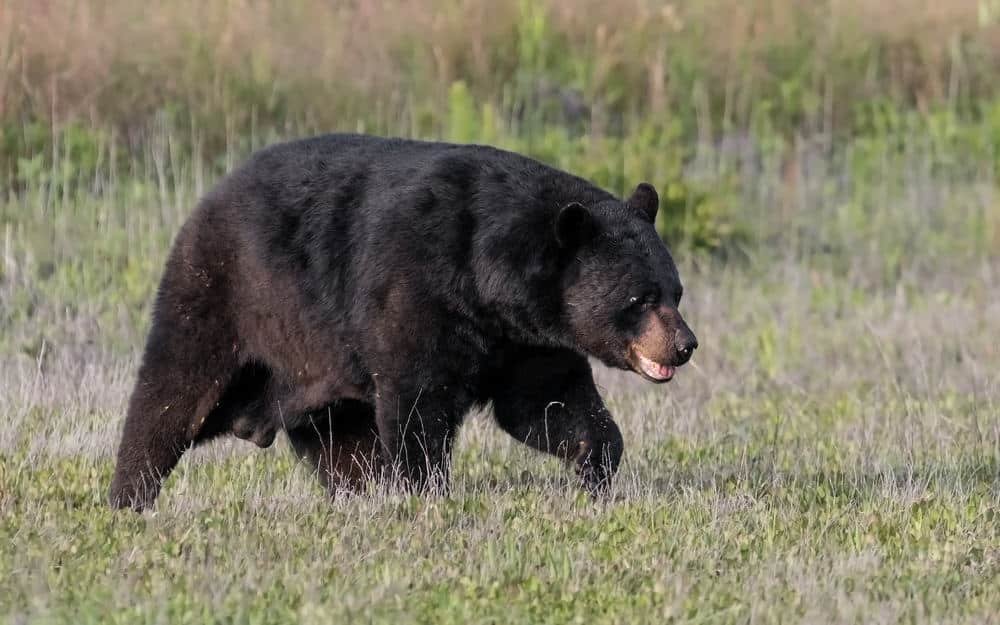

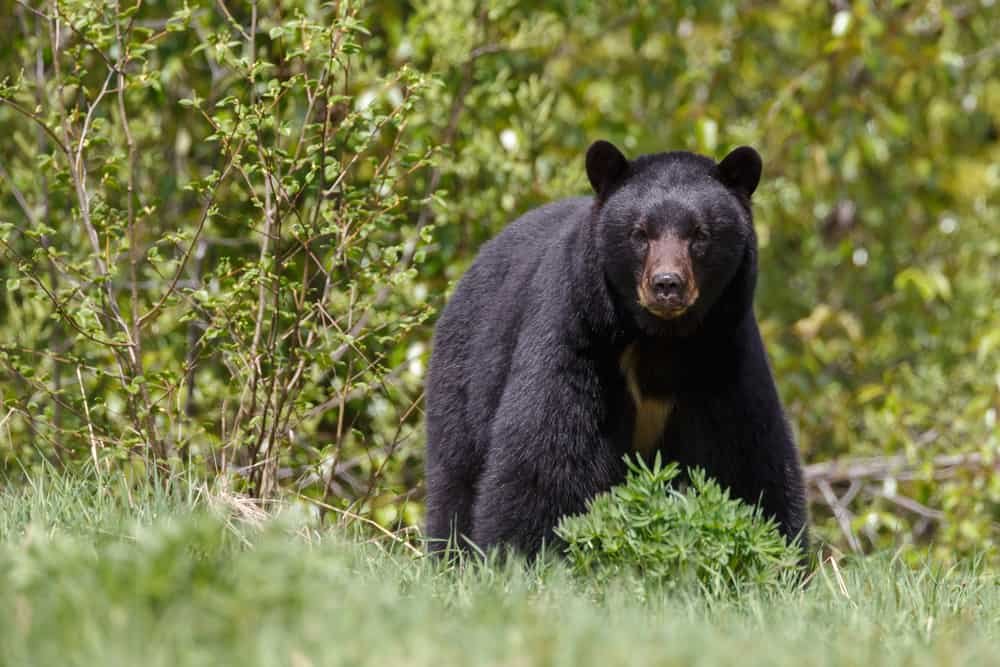
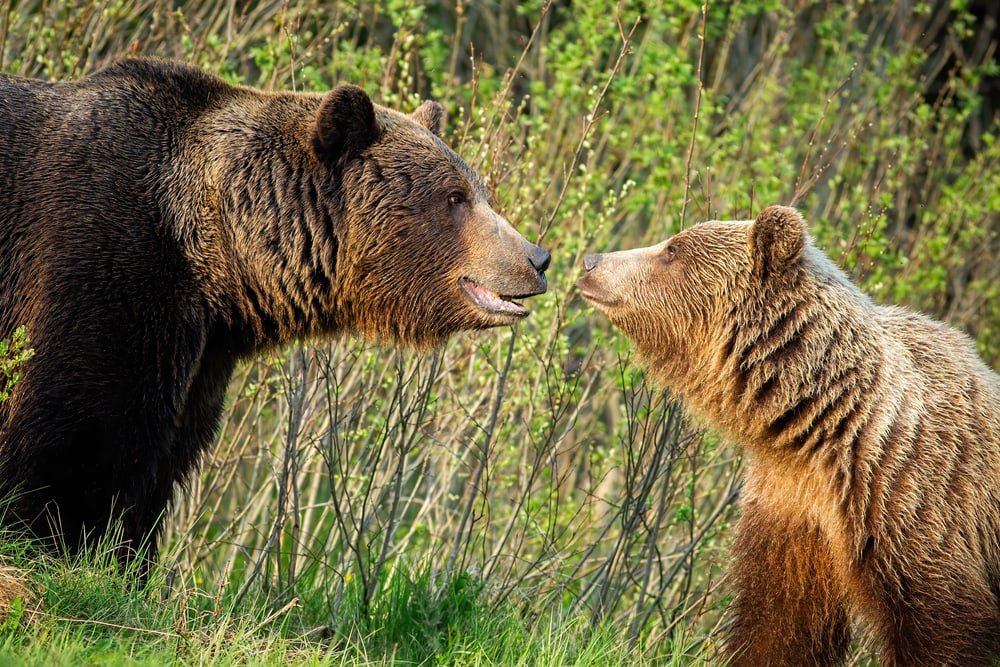
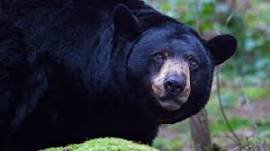
Your point of view caught my eye and was very interesting. Thanks. I have a question for you.